The invitation-only event attracted senior-level executives from across the country and positioned NAIFA as a thought leader in promoting diversity and inclusion.
NAIFA’s 2019 Diversity Symposium was a huge success by any account. Held in conjunction with the association’s Congressional Conference in Washington, D. C., last week, the meeting was fast-paced and highly interactive, with top-tier executives discussing the changing face of Main Street USA and offering critical insights on mastering cultural competencies, managing different generations in the workforce, and engaging in “effortless connections.”
NAIFA’s President-Elect and Chair of the association’s Diversity Task Force, Cammie Scott, MSIE, ChFC, CLTC, LUTCF, REBC, RHU, SHRM-SCP, SPHR, kicked off the symposium by extending a warm welcome to all attendees and thanking them for their participation.
She stated the primary objective of the event, which was to help participants learn how to engage and interact successfully with different people groups.
This is necessary, she pointed out, because the demographic make-up of the U.S. is changing exponentially, and companies must change and adapt if they want to stay relevant to the communities and markets they serve. Successful people become successful by letting go of what they know in order to achieve something new. “This symposium is one more step along the journey,” she said.
Empowering NAIFA members
Next on the podium was NAIFA CEO Kevin Mayeux, CAE, who thanked Scott for her tireless work on the Diversity Task Force and representatives from NAIFA’s industry partners--Women in Insurance and Financial Services, (WIFS), the National African American Insurance Association (NAAIA), the Latin American Association of Insurance Agencies (LAAIA) and the Capital Area Gay & Lesbian Chamber of Commerce (CAGLCC).
In his presentation, Mayeux echoed Scott’s call for change. As he told the attendees, “the world continues to change and evolve, and if we do not change, we will be left behind.” When NAIFA launched the Diversity Symposium a couple of years ago, the primary objective was to empower NAIFA members to be successful in today’s new environment and help them thrive. This remains the goal of the symposium, he said. “The work you do will help other advisors better serve their clients.”
Change is occurring everywhere, Mayeux added. It is happening globally, technologically and demographically. For example, as the U.S. Census indicates, there will be no ethnic majority in this country by the middle of the century. Also, Gen Y workers now comprise 40 percent of the available work force and Millennials currently constitute the largest demographic group in the country. What is interesting to note about these two groups is that they are no longer just asking—they are expecting diversity of thought and practice in their workplace.
In addition, there are now lots of single-parent and LGBTQ households—and these groups have a wide range of financial needs and concerns that need to be addressed.
There have been religious changes as well, he added. In 1990, members of Christian religions made up 86 percent of the U.S. population. Today, that number is below 75 percent, with a growing number of Americans identifying with non-Christian faiths.
And, he said, many in the audience know that the changing faces on Main Street USA have a great deal of buying power, though many of them are underserved.
“Why?” he asked. “After all, many of them represent what advisors are looking for in an ideal client: They are highly educated, have some disposable income, and are interested in taking steps to secure their financial future.”
This is the main reason we are at the symposium, he added. Two years ago, NAIFA made a commitment to bolster its efforts in diversity and inclusion (DI). Since then, he added, the association has embarked on several initiatives aimed at promoting DI. These include hosting diversity webinars led by industry partners, creating a NAIFA Diversity Champion Award, and launching several Action Reports that highlight success strategies for dealing with diverse markets.
NAIFA is off to a good start, but “we know we can do more,” he said. “NAIFA is committed to doing more by working with you and the industry to move the needle in insurance and financial services.”
“For over a century,” he added, “NAIFA members have worked tirelessly to protect the financial futures of millions of American families. As we implement the NAIFA 20/20 Strategic Plan, diversity and inclusion will remain a major component. We will continue to pursue initiatives that promote a more diverse membership and cater to the needs of a more diverse market. The time is now.”
Mastering cultural competencies
With that call to action, NAIFA coach and symposium moderator, Dan Finley, wasted no time in inviting the symposium’s first panel of experts to the podium: Darlene Flagg (WIFS), Ken Branch (NAAIA), Gabriela Dominguez (LAAIA) and Van Goodwin (CAGLCC). Finley is the President and Co-Founder of Advisor Solutions, the Premier Financial Advisors Business Consulting and Coaching Service.
In her remarks, Flagg offered some interesting characteristics about women in the U.S.:
- They make up 51 percent of the U.S. population.
- There are 166 million women in the U.S.
- More than 50 percent of university graduates are women.
- 76 percent of teachers in the U.S. are women.
- Women make 85 percent of all household buying decisions.
- Over 50 percent of employees in the U.S. are women, and 4. 8 percent are in leadership positions.
- More than 1 million women earn more than $100,00 a year, and women live longer than men.
So, how can advisors engage and work successfully with such an attractive market? Respect is key, according to Flagg, who is AVP of business development at National Life Group. “Do not ask her if she is waiting for someone else to make a purchasing decision and remember that she is well educated. So, in most cases, she has likely done her homework before she agrees to meet with you.”
Also, advisors should be willing to accept a “no” the first time they try to sell her something and remember that most women value relationships. With this in mind, they should always be authentic, and learn how to become effective listeners. “She will tell you what she wants if you listen to what she is saying,” Flagg pointed out.
Flagg then identified some differences between men and women--differences all advisors should keep top-of-mind when cultivating the women’s market:
- Women remember everything.
- Women are more likely to rely on their feelings while men rely more on logic.
- Women many need more time than men to make a decision.
- Women prefer to be in a supportive relationship.
Attracting African Americans to the industry
The next speaker was Ken Branch, who offered some helpful hints on attracting African Americans to the financial-services industry. Branch is currently the National Chair of NAAIA and has spent more than 40 years in the financial-services industry. He currently owns a consulting firm.
Branch started in the business at the tender age of 19, and over the years, has worked his way up the ladder of success. To engage and attract diverse employees, he said, companies should visit institutions of higher learning and try to make insurance “sexy and appealing” to students. “We must enhance the image of the industry,” he added. And once new employees are on board, they also need to be mentored on a regular basis.
In addition, those interested in having diverse employees should note the changes that are happening in the society—changes that are affecting all areas of our lives.
For example, he recently attended his family reunion and noticed that he had one cousin who is Korean, one sister-in-law who is Hispanic, and a daughter-in-law who is Caucasian. Advisors need to recognize the changes that are happening in many American families today and learn how to engage and work with them. “Now is the time to embrace diversity,” he said.
Finding success in the Hispanic market
The next panelist, Gabriela Dominguez, became an agent in 1990, and has been in love with the profession ever since. She is currently the president of Avante Insurance Agency.
To attract diverse employees, recruiters should approach high school and university students and explain what they do for a living. As they do so, they need to be aware of the differences among the Hispanic population. For example, some people might not know that though Hispanics are viewed as a single demographic group in the U.S., they are not all the same. “It is a fragmented culture,” she said.
Also, some Hispanics see themselves as Caribbean rather than Hispanic, and there are different nuances in the Spanish that is spoken by Mexicans and the Spanish that is spoken by Cubans. What can go a long way in engaging Hispanics is to join them in celebrating their holidays and festivals. This helps to build a sense of community, she said.
Her biggest takeaway for advisors? Learn to communicate properly with prospects and clients and take the time to repeat those communications.
Recruiting in the LGBTQ market
The last panelist on the multi-cultural track was Van Goodwin, president of the Capital Area Gay and Lesbian Chamber of Commerce and founder and managing director of Van Allen LLC, a technology strategy consulting firm. Goodwin said that the LGBTQ community has lots of buying power--about $913 billion globally. The average LGBTQ business lasts for about 12 years, compared to five years for other businesses.
To recruit candidates for this market, employers should attend job fairs and become actively involved in their local chamber of commerce.
Table discussions
After this informative session, attendees were then divided into several groups, were assigned questions about DI, were asked to have a 10-minute discussion on those questions and share a summary of their deliberations.
The following are some of the questions asked and the responses shared:
Question: Where did you miss the mark in building and supporting cross-cultural efforts, and what did you learn from your experience?
Answers:
*We should have been more cognizant of the people we worked with.
*We should have been more inclusive.
Question: Share a best practice you learned by working cross culturally.
Answers:
*Create space for all to be comfortable when they are asking questions.
*Provide opportunities for people to network with one another.
*Ask open-ended questions to help promote inclusion.
*Do not make assumptions just by looking at someone.
*With many Millennials, DI comes naturally.
*Know your “why.”
*Remember that for diversity to succeed, it has to move from top to bottom.
*Be aware of the communication preferences of different groups.
*Diversity is inclusion.
Question: Who are the cultural influencers in your organization?
Answer: Diversity has to start from the top and move down.
Managing different generations in the workforce
After a short break, the focus of the symposium shifted to another topic that is becoming increasingly important in today’s multi-generational workforce—how to understand and manage employees from different generations.
On hand to shed some light on this critical topic was Maneesha Manges,a digital-marketing professional who currently leads HighRoad’s Client Services Team.
Manges described some of the characteristics of the largest group in the workforce today—the Millennials--and how to successfully engage and work with them.
Many Millennials think that “it is all about them,” and they love to share, she said. They are reluctant to talk one-on-one and prefer group settings. For them, collective bargaining is key, and sharing and working together are pivotal in figuring things out. Also, the sentence, “I will lift others as I climb,” describes them very well. However, advisors should keep in mind that not all Millennials are the same, and some older Millennials do not even want to be called Millennials.
To find success with them, you must understand their sensitivities and find out how they want you to communicate with them. At the end of the day, she said, all of us have the need to be heard and appreciated.
Table discussions
After Manges’ presentation, attendees were again grouped by table, assigned a specific generation, and told to share stories of how they have interacted with their assigned group in the past.
The following are the different “generations” identified and their main characteristics:
Traditionalists:
*They are savers.
*They honor their obligations.
*They like paper signatures.
Baby Boomers:
*They are self-assured.
*They have a strong work ethic.
*They are in various stages of transferring wealth.
Gen Xers:
*They are unsure of the future. This is not surprising since they witnessed negative events such as 9-11 and the 2008 financial crisis. For them, what they were taught by their parents—that if they work hard, things will be all right—did not necessarily pan out.
Millennials:
*They are digital natives.
*They want a trophy just for participating.
*They want to be part of a group and are team-oriented.
*Collective bargaining is key.
Gen Z:
*They are digital natives.
*They want flexibility to work from home.
*They are accustomed to being over-stimulated—they can have lots of things going on at the same time.
*They like the support of a classroom setting.
*They like to celebrate wins and victories.
After this exercise, Scott thanked all of the participants again and commended them for a job well-done. She also took the opportunity to make an important announcement—the 2019 NAIFA Performance +Purpose Conference this September will feature an entire track of important diversity-related topics.
In Scott’s closing remarks, she asked all participants to continue the diversity conversation after they leave the meeting and assured them that there is a place in the conversation for everyone.





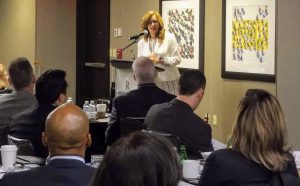
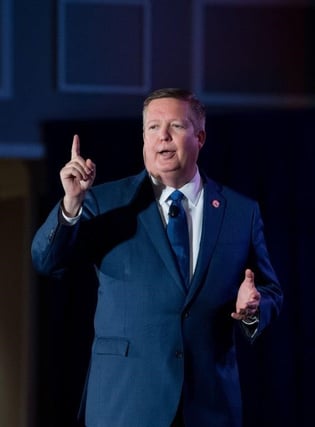
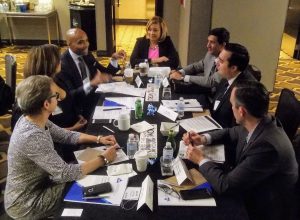
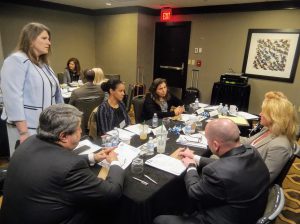



.png?width=300&height=300&name=CC%202025%20Ad%20(300%20x%20300%20px).png)
.png?width=300&height=600&name=Tax%20Talk%20Graphic%20-%20email%20tower%20(300%20x%20600%20px).png)


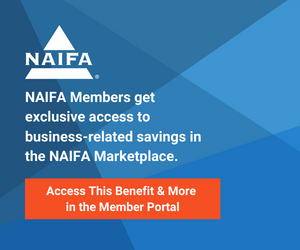
.png?width=300&name=NAIFA-FSP-LH%20with%20tagline%20-%20AT%20blog%20email%20ad%20(300%20x%20250%20px).png)
.png?width=728&height=89&name=2024%20Congressional%20Conference%20(728%20x%2089%20px).png)
